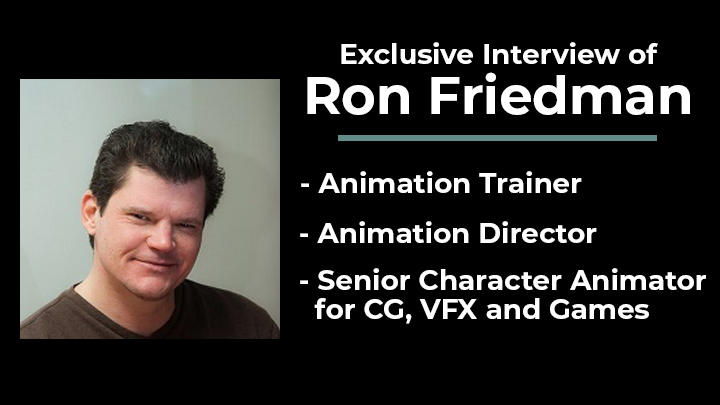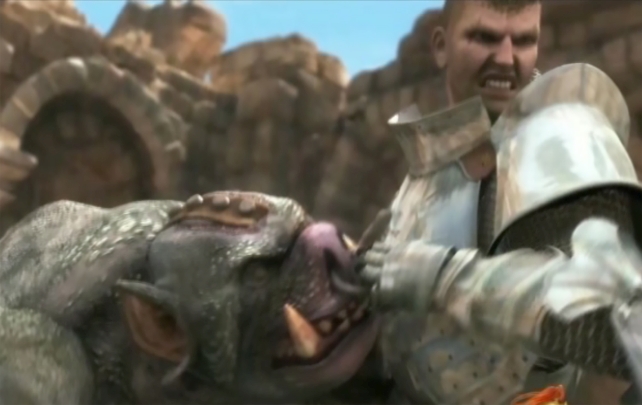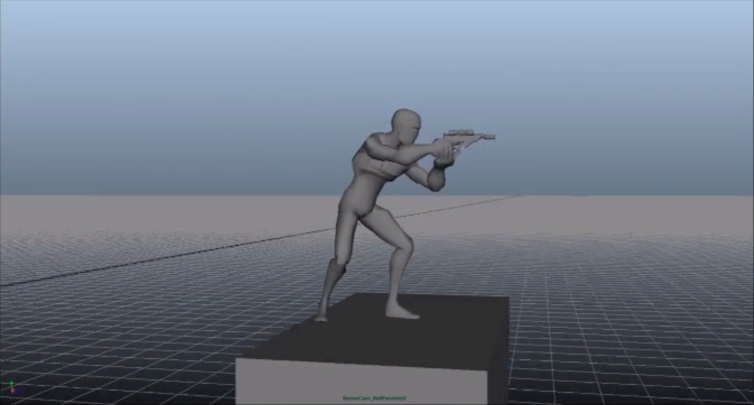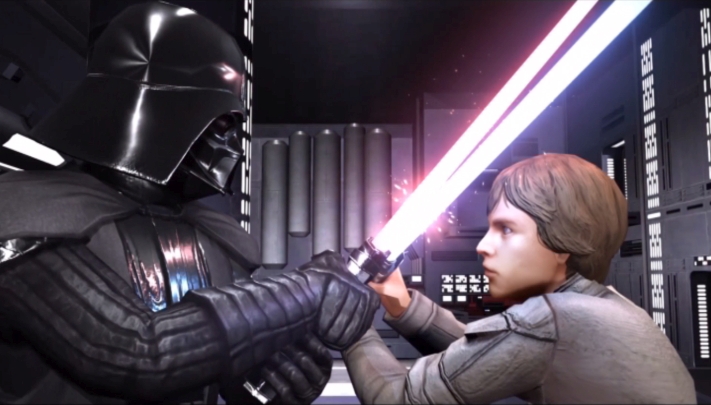Learn how to become a Character Animator from the Animator himself!

Ron Friedman comes from a performance background of stage and on-camera acting with over 28 years of experience as a Character Animator.
He has worked in Feature Animation (Pagemaster, Swan Princess), Visual Effects Animation for Film (Van Helsing, Lemony Snicket, The Mist, Snakes On A Plane), and Videogame Animation (Star Wars: Rivals, Robot Rising, City Of Heroes, Immortal City). Ron was Animation Supervisor for the Academy Award-winning film “Pan’s Labyrinth” and was Animation Director on the Namco/Bandai videogame “Afro Samurai”.
Currently, Ron is a Senior Animator at The Third Floor, Inc. in Los Angeles, CA doing PreVis for an upcoming Marvel feature films. Prior to that, he was a Lead Animator at Disney Interactive on Star Wars: Rivals.
Ron has taught animation at the New England Institute of Art, Mount Ida College, and at Harvard University Extension in Cambridge, MA. He has provided tutorials for DigitalTutors.com (now Pluralsight) and Lynda.com (now LinkedIn Learning) on the subject of 2D and 3D Character Animation as well as a variety of other subjects. Ron also provides one-on-one online tutoring regarding how to become a Character Animator through his website: www.toonimations.com
Welcome Ron. Please share your educational background.
Initially, I wanted very much to attend CalArts when I got started but I wasn’t a good enough traditional artist to make the cut as it was (and still is) quite competitive…. and I wouldn’t have been able to afford it if I’d gotten accepted, anyway! So I took some classes at the Animators Union offices in North Hollywood, CA as they were teaching classes there at night back in 1991.
I then had an opportunity to intern at a small animation studio and so I worked there forty hours a week while working nights as a security guard to pay the bills. After a year of that, I had learned enough to get a paying job at another studio and the rest, as they say, is history!
You have come a long way – instructor, animator, senior animator to owner of training company. Please explain your entire professional journey in detail.
Well, at the start of my career, it was all about 2D animation and 3D hadn’t really come into its own yet. But having come from an acting background and not an art background, I found that my drawing ability was always the thing I struggled with most. I was an okay artist, but not as technically proficient as many of the artists that I worked with.
When 3D animation became more prevalent during the end of the 90’s, I learned how to do animation in Maya and it was the best thing that ever happened to me! My drawing ability was no longer a hindrance and I could focus entirely on the performance of the character since I no longer had to worry about rendering it myself through drawings.
In 2004, I moved from animation for film and the emerging CD-Rom game market into VFX after I got a job at ILM working on “Van Helsing”. Shortly after that, I transitioned to CafeFX in Santa Maria where I had the incredible opportunity to be Supervising Animator on Guillermo Del Toro’s film “Pan’s Labyrinth” as well as work on other fun movies like “Snakes On A Plane” and “Stephen King’s The Mist”.
In 2007, I had the opportunity to move back into Game Development with a job offer to join the Afro Samurai team at Namco Bandai. And in deciding whether to stay in VFX or switch back over to Game Development, I thought of a former colleague of mine who had gotten a job at Pixar in the early 2000’s because at the time there weren’t as many animators who were both schooled in traditional animation principles but was also fluent in CG. He got into that company and that area of our industry when the getting was good.
And that made me think about the fact that someday people are going to ask “Okay, do you want to watch Indiana Jones or BE Indiana Jones?” because games will look as good as movies do but will also allow participants to interact in the story. And the section of the industry that would lead that would be Game Development because they have the most experience in non-linear storytelling. So I decided to shift my focus back to Game Development and remained focused in that discipline for the next eleven years.
I accepted a Lead Animator position with a company in Massachusetts and so our family relocated there in 2009. While I was there, I was asked if I would like to participate in a talk at a local SIGGRAPH chapter meeting. That led to a seminar at another school… which led to teaching a weekend workshop… which led to teaching an animation class. By the time I left Massachusetts in 2015, I had taught animation for CDIA in Waltham, the New England Institute of Art in Brookline, Mount Ida College in Newton, and Harvard University in Cambridge. I loved teaching as it was an opportunity to “pay it forward”, so to speak, by passing on what I had learned over the last 20+ years in the industry to a new group of up-and-coming artists!
I then was offered a Lead Animator position with Disney Interactive in Palo Alto which brought my family back to California. After three years there, the studio unfortunately closed. I then received a position as a Senior Animator at The Third Floor, Inc. in their Immersive department working on a forthcoming attraction for Universal. After that, I transitioned into doing PreVis for motion pictures which is what I continue to do today… and I love every second of it! It’s thrilling to get to be a part of making a film so early in the production pipeline!

You have given both kinds of training – classroom and online. Kindly share your thoughts regarding pros and cons of both.
I think that for the most part, it doesn’t matter where you learn…. whether it is online or in a classroom… especially when we are talking about students and teachers who are all sitting in front of computers as their learning and training. As long as you can see and communicate with your fellow classmates and have open lines of discussion there.
The one advantage that classroom education has… and this is something that has become more prevalent with most of us working from home due to Covid-19… is that when you go to a place of business (whether that’s a classroom to learn or an office to work, etc), being there helps put you in the mindset to work and shift your focus to being productive because that is the reason for being in that place. I feel that it is easier to be distracted at home.
Let us know more about Toonimations. What motivated you to incept it? How is it different from the peer competition for Character Animation training?
Toonimations is basically a name for my website that helps me talk about and coordinate the personal one-on-one online animation tutoring that I do.
The way it started was that one of my students from when I was teaching in Massachusetts asked after the school’s animation portion of the program whether I might be willing to tutor him privately so that he could continue learning about Character Animation in particular.
I thought back to me getting my start and how when I was working under a supervisor or mentor, I didn’t only work on my current assignment for one or two tries and then put it down and move onto the next thing. I had to redo it and polish it until it was right and was done. I think that there’s a lot to be learned from having the opportunity to take something all the way to final polish with guidance through the entire process, rather than just some instructional videos and a couple of discussions before moving onto the next topic.
Since this is something that I do in my spare time… which isn’t much when you consider my family and personal life stuff…. I only have a handful of students at any given time. It is not a school. But if I have enough free time, I really enjoy getting to pass on what I’ve learned!
How do you emphasize more on techniques rather than software, during your 3D Animation training?
The tutoring consists of analyzing your personal strengths and weaknesses and improving your abilities as you grow out your demo reel and compilation of your work. Filling gaps where necessary, strengthening weaker aspects, refining even sharper already strong skills.
There is no set curriculum. What we work on depends entirely on the ability and focus of the individual student.

What have ‘you learned’ during giving training to others?
So much of what we do just goes back to the Principles of Animation.
I believe it was Fred Moore back at the old Disney studios who had a prize wheel kind of setup where he would spin the wheel every time he sat back down to either start the day, back from lunch, using the restroom, etc, and whatever of the 12 principles of animation it landed on… he would try to focus on that one especially while he worked again.
And it didn’t matter WHICH of them it landed on… because ALL of them are important and are to be kept in mind while we create our performances.
You had worked as an artist at so many international studios. How has been your overall experience?
I have enjoyed very much getting to work for many different studios that represented many different cultures and audiences and platforms and experiences!! Variety is the spice of life!
What do you prefer during job change – studio brand, the projects, salary, working on new softwares / tools or any other parameters?
All of those considerations come into play when choosing where you will work next… as you will be dedicating yourself to this company and this project and giving it your all to have it be the best it can be and for you to grow as much as possible.
If you are fortunate enough to have choices about where your path leads you next, it’s a gift if you can choose to work somewhere that fulfills you and satisfies the requirements that you have in your personal situation. For example, my salary became a lot more important when I became a father and had a family to support! 🙂 haha
Kindly let us know your workflow /pipeline when you are assigned a new project.
First, I discuss the scene with the director or supervisor or person leading the animation team for this sequence.
Once I feel I have a clear understanding of what the scene needs to be, I begin thinking and thumbnailing and planning how to execute the shot… exactly what it’s going to be in every moment.
One of the most important things I can convey to fellow animators is this: there should be as little GUESSING in the computer as possible. Figure out things that aren’t for sure in your head and/or on paper first so that you can spend less time guessing in the computer which is much slower.
Share your experience working on “Star Wars: Rivals”.
It was truly thrilling to get to work on a title set in the Star Wars universe! The game went through various changes and iterations, but overall it was a fun process! It’s also a lot of responsibility getting to animate such major characters that are so popular and highly regarded in the fan community!

Please share your views on how AR and VR will impact our Animation and VFX industry.
I am a HUGE FAN of VR! I recently played a game called Ghost Town Mine Ride & Shooting Gallery… which is in essence a ride that someone created in the Unreal Engine and that lets you virtually ride this attraction while shooting at targets.
I also recently played Valve’s Half-Life: Alyx and that game straight up spoiled me!!! It was one of the most amazing and immersive storytelling experiences I’ve ever done!! Absolutely breathtaking!!
It’s incredible that we now have access to hardware and software that will allow us to create experiences for people that they don’t have to travel to a particular location in the world to participate in! And a new storytelling and experiential platform like VR and AR mean that a whole slew of content will need to be available! So hopefully it will mean more work for artists and more opportunities to tell stories and share experiences in new and amazing ways!
How pre-viz is help for entire 3D and Post Production Pipeline?
PreVis has existed as a step in the storytelling process in the animation community for a very long time. But it has only been in the last 15+ years that the process of creating a step in the pipeline between 2-dimensional storyboards and beginning to film and start production has begun to be utilized on a mainstream basis in live-action.
Being able to experiment with simple models and cameras allows for the same type of iterative and creative decision making without spending a ton of time and resources in comparison to production costs reminds me exactly of thumbnailing and planning a shot and shooting reference prior to being animating a shot fully in 3D.
What are your next goals?
I have an animation short that I’m working on slowly but surely with a close friend and fellow animator that we will eventually hope to get more people involved with to let it see the light of day. 🙂 It’s an animated music video to one of my favorite band’s greatest songs!
Check out my personal website: http://www.toonron.com/
My character animation demoreel: https://www.youtube.com/watch?v=nQVSfntmOHs
